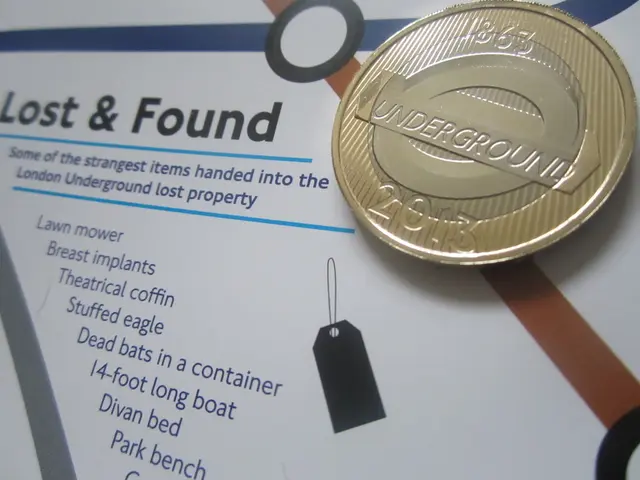Flashing Lights and AI: DB's Capacity Prediction System Catches Steam in Hamburg and Berlin
Rail foreseeing light drapes and AI utilization: Anticipated railway patronage trends - Forecasted Usage of Light Barriers and Artificial Intelligence in Track Management
In the hustle and bustle of daily commuting, knowing whether your train will be a sardine can or a comfortable cruise can be a game-changer. That's where Deutsche Bahn's clever "DB Lightgate" system comes in, turning the red light on when a train is full as hell, giving you a heads-up to find a less crowded boarding spot, much like at most S-Bahn stations in the bustling city of Hamburg. But is this AI-powered system headed for Germany’s mainstream commuting culture, or is it just a flash in the pan?
The system works like this: light barriers installed on both sides of the tracks at train stations measure the light passing through the windows of incoming and outgoing trains. The lesser the light, the higher the passenger count. DB compares these measurements with clever calculations using AI and historical data, achieving an impressive accuracy rate of over 90 percent, according to Julia Kuhfuß, head of "DB Lightgate".
DB began testing the technology at S-Bahn stations in Hamburg in January 2023, and now 88 percent of all stations boast occupancy displays. The "DB Lightgate" system is also being tested in Berlin, with Artificial Intelligence yet to be incorporated. The trial project is backed by an investment of around 900,000 euros from German Rail and the states of Berlin and Brandenburg.
While tests in other cities like Munich, Leipzig, and Frankfurt are underway (or already completed, in the case of Frankfurt, where a different system is used), traffic researcher Andreas Knie remains skeptical about the widespread adoption of "DB Lightgate" in Germany. Instead, he advocates for automatically evaluating camera recordings of the platform using AI.
Interestingly, "DB Lightgate" doesn't appear to be in use for long-distance traffic as of now, as a spokesperson confirmed, nor does it display the occupancy of individual carriages. However, passengers can find information about a train's occupancy via the app and the website, where the figures are calculated from historical values and booked seats. Karl-Peter Naumann, honorary chairman of the passenger association Pro Bahn, praises the displays, calling them particularly useful in local transport where seat reservations are not the norm.
As for spread beyond Hamburg and Berlin, keep your eyes peeled for updates from Deutsche Bahn or relevant press releases. For now, enjoying a less crowded ride is as easy as keeping an eye on those blinking lights at the stations.
- DB Lightgate
- Hamburg
- Berlin
- CapacitY Utilization
- Deutsche Bahn
- S-Bahn
- Smart Rail
- Artificial Intelligence
- Germany
- Commuter Rail
- Train Occupancy
- The DB Lightgate system, currently operational in Hamburg's S-Bahn stations and under testing in Berlin, uses artificial intelligence and light barrier technology to estimate train occupancy levels.
- As the system's trial progresses in Berlin, the incorporation of artificial intelligence is yet to be implemented, but it has already achieved an impressive accuracy rate of over 90 percent in Hamburg.
- While the adoption of the DB Lightgate system is being tested in various cities like Munich, Leipzig, and Frankfurt, implementation across Germany's mainstream commuting culture remains uncertain, with traffic researcher Andreas Knie advocating for alternative methods.







